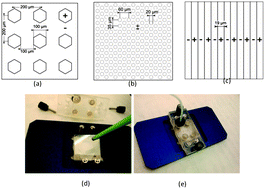Hybrid ferroelectric–polymer microfluidic device for dielectrophoretic self-assembling of nanoparticles
Abstract
Carbon nanoparticles are becoming ubiquitous in many fields of science and technology. However, a grand challenge remains in assembling, patterning, and positioning or even simple manipulation of CNTs for complex functional assemblies. CNTs have in fact enormous perspectives for application in biotechnologies as bactericide agents or as prominent tools for investigating cell mechanisms, or more in general as functionalized nanoparticle-vectors, but their exploitation requires viable technology at the lab-on-a-chip scale. Many approaches have been attempted in developing technologies for manipulating CNTs. One elective approach is based on electric fields driven mechanisms such as DEP forces. A variety of chips have been designed and realized with this aim. Here we report on a novel hybrid microfluidic chip made by assembling a polar-dielectric crystal with polymeric microfluidic channels. One challenging feature of such a hybrid device approach, based on an electrode-free dielectrophoretic (DEP) approach, is that it makes use of surface charge templates for self-assembling and manipulation of CNTs in liquid media directly into a microfluidic channel. Here various examples of self-assembly in microfluidic channels as well as separation and collection of two classes of nano/microparticles are reported. The method can open the way to novel fabrication protocols for the realisation of future flexible devices with new and more complex functionalities, highly desirable in electronics as well as in biotechnology at the lab-on-a-chip scale.


 Please wait while we load your content...
Please wait while we load your content...